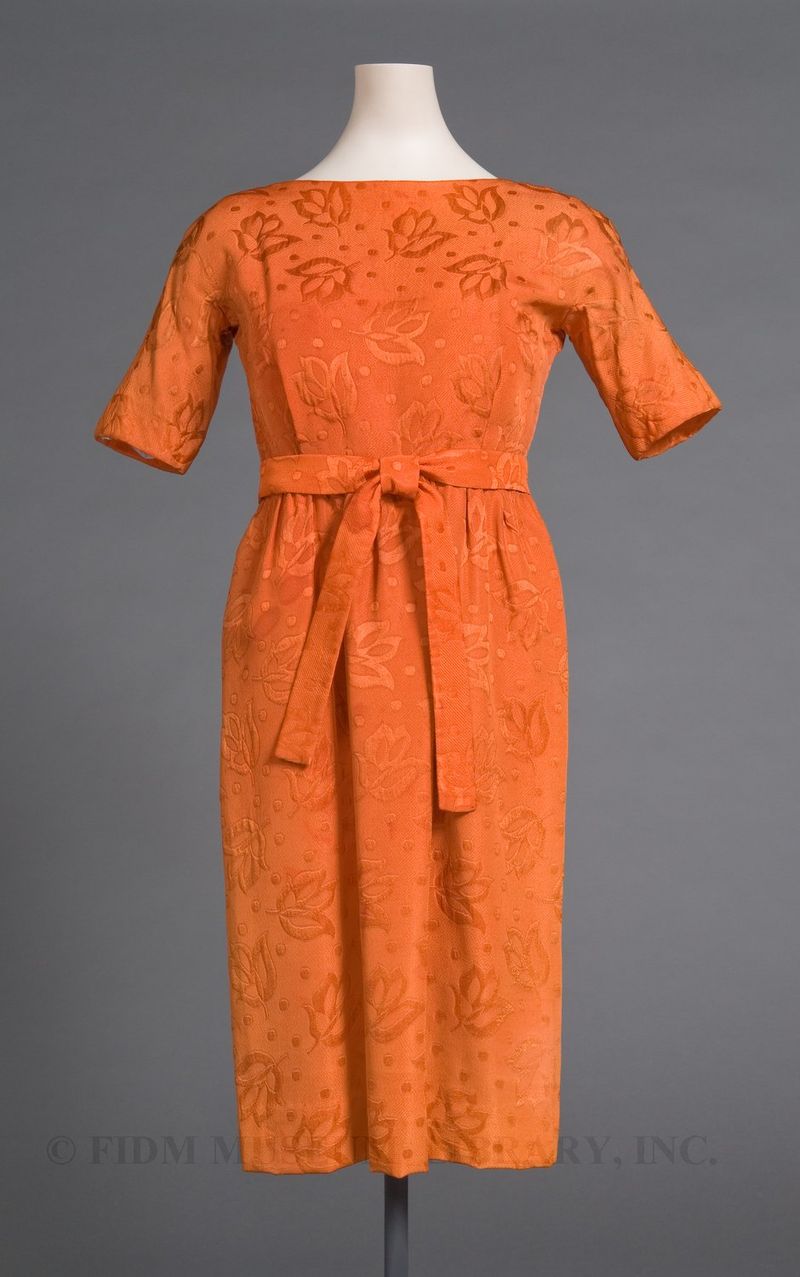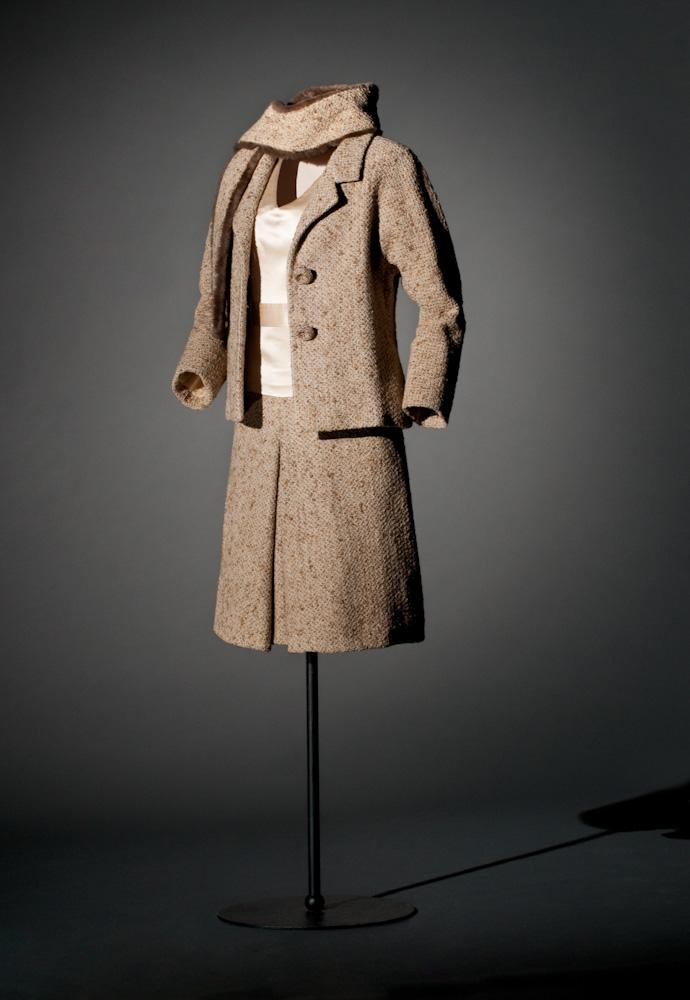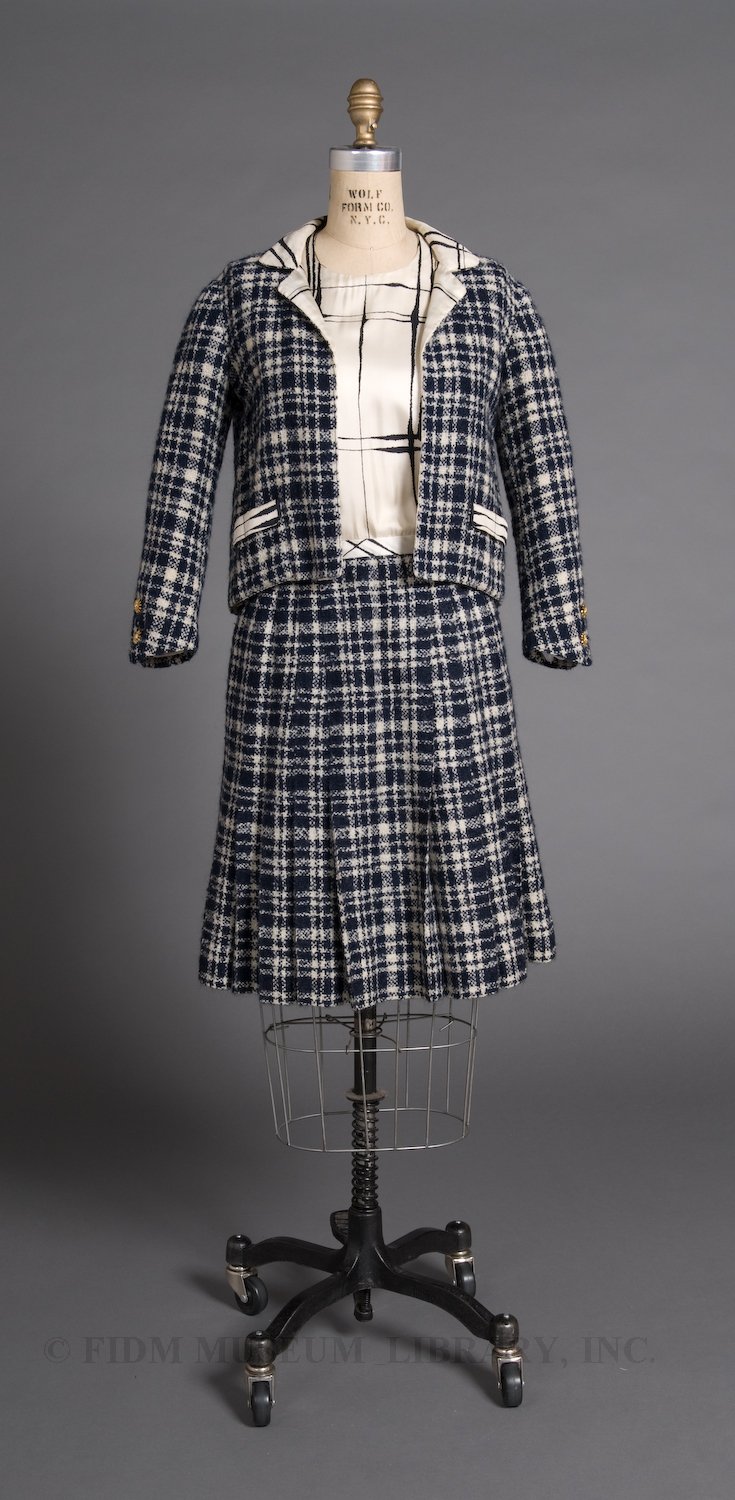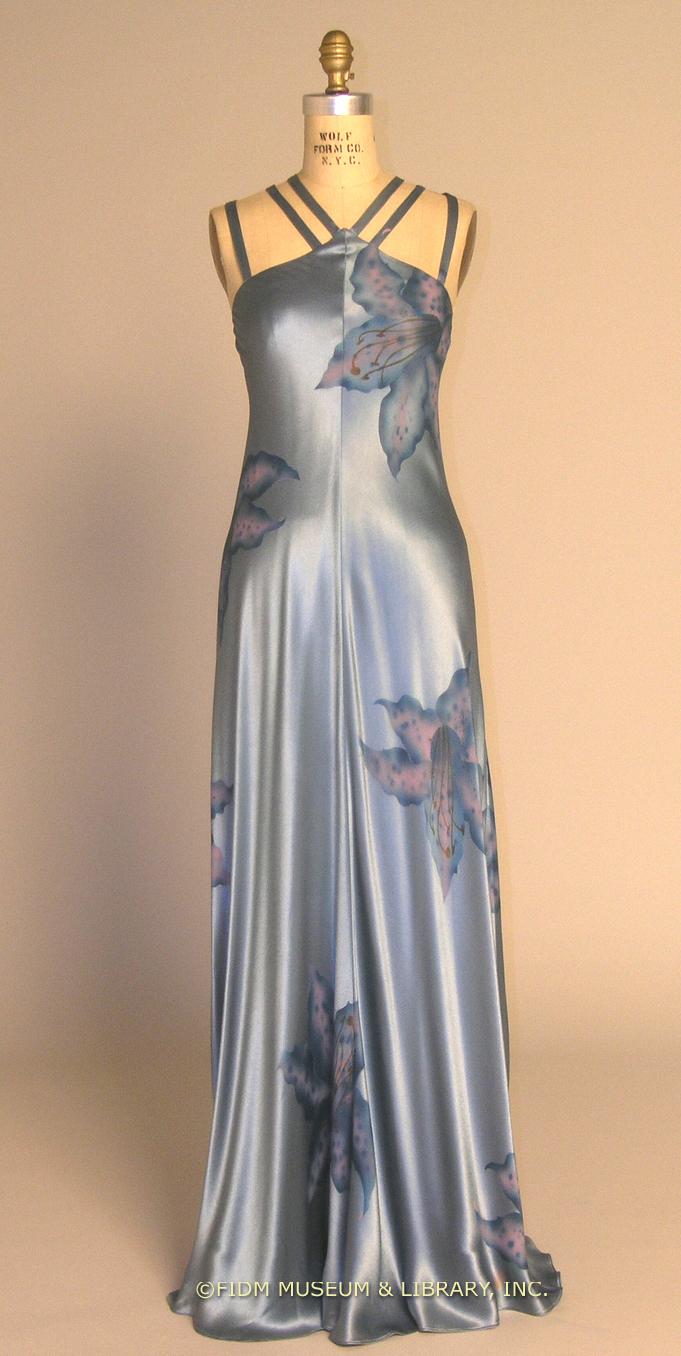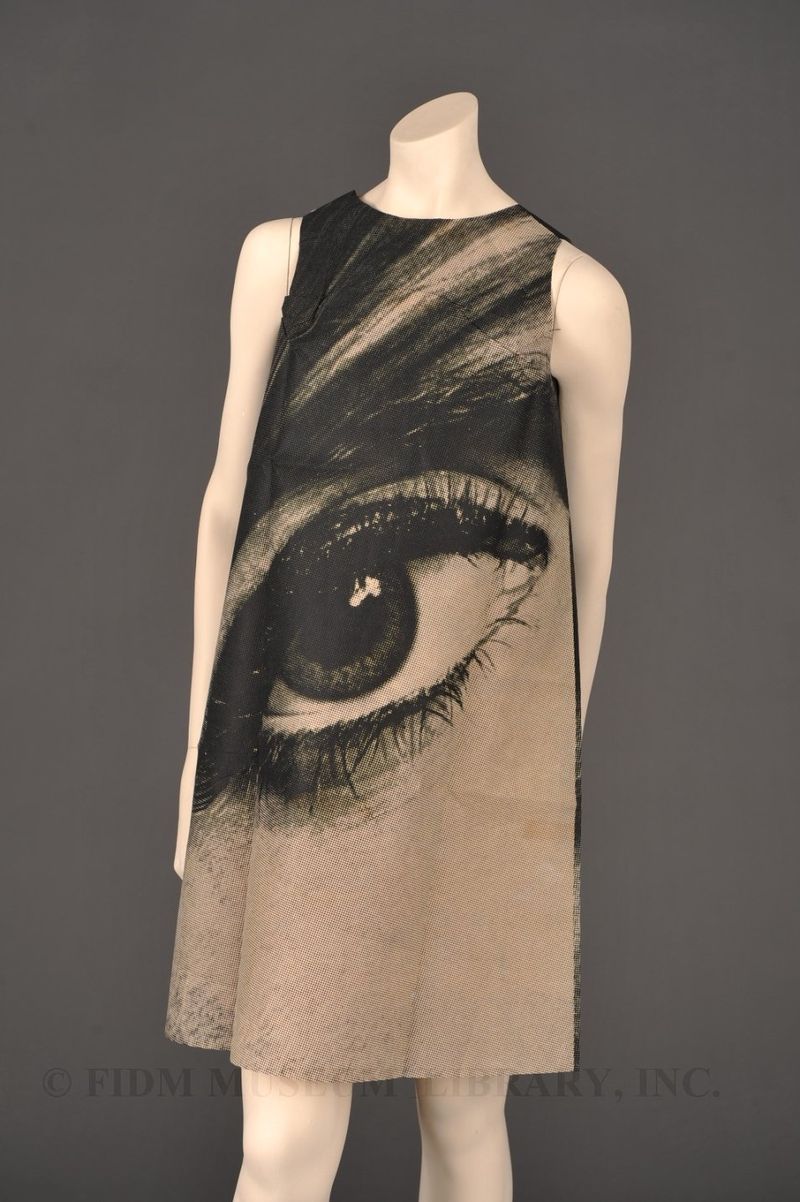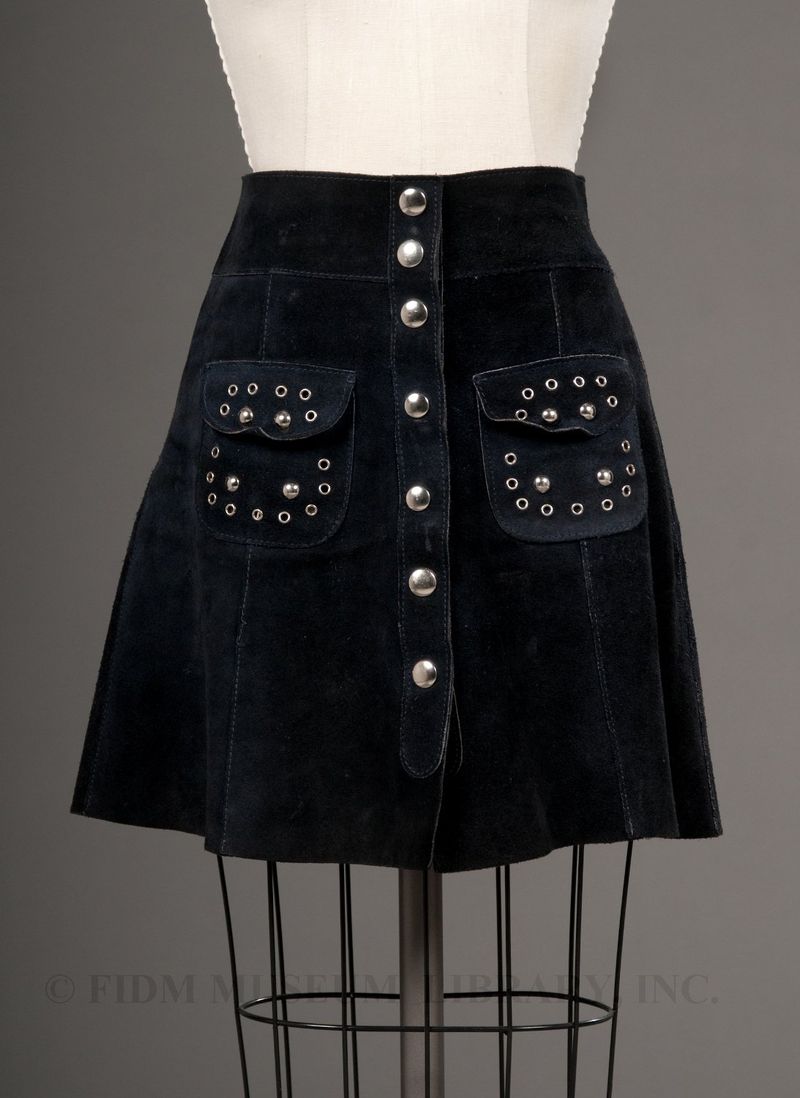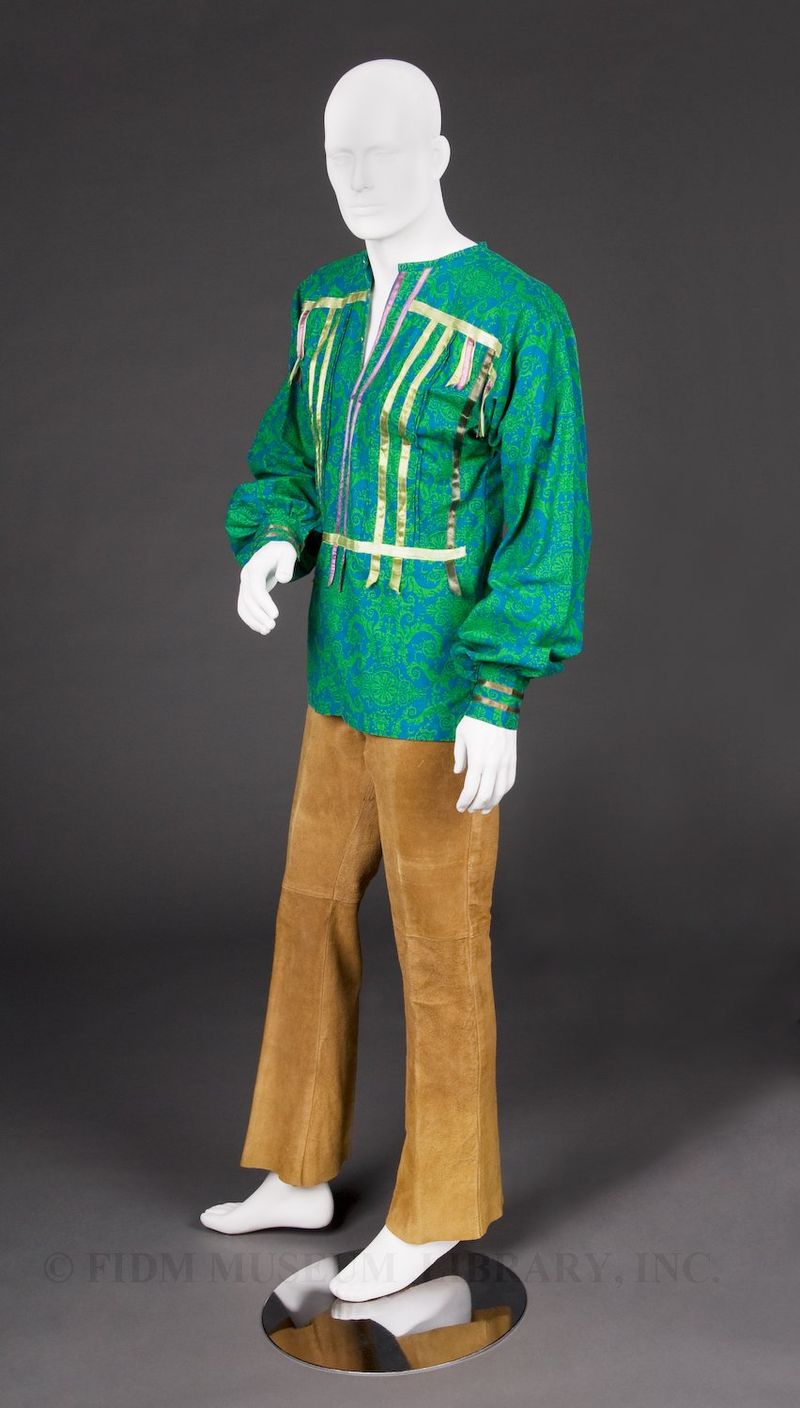This website uses cookies so that we can provide you with the best user experience possible. Cookie information is stored in your browser and performs functions such as recognising you when you return to our website and helping our team to understand which sections of the website you find most interesting and useful.
Popular conceptions of 1950s dress usually fixate on the defined waist and full skirt of Christian Dior's New Look. Though this silhouette dominated fashion for much of the decade, in 1957 a new shape appeared. Called the sack or chemise, this new dress... Read Article ››
High Style: Betsy Bloomingdale and the Haute Couture video!
For those of you who asked for more video after watching The Couture Process, you are in luck today! The FIDM Video Gallery, where you will find various FIDM related videos, currently features a short segment titled “Opening Party: Betsy... Read Article ››
Coco Chanel
Gabrielle "Coco" Chanel (1883-1971) distinguished her design aesthetic through a strict insistence on comfortable, lightweight garments and a pared-down silhouette. Chanel's interest in simplicity is seen in her earliest millinery designs from... Read Article ››
Holly’s Harp
Los Angeles based designer Holly Harp (1939-1995) began her fashion career in the late 1960s, designing theatrical, psychedelic clothing for iconic performers such as Janis Joplin and Grace Slick of Jefferson Airplane. Harp's early designs were in tune... Read Article ››
Twiggy
The girl herself is the extravaganza that makes the look of the sixties.1 Twiggy exploded onto the scene in 1966 though pure happenstance. While getting a haircut at the London salon Leonard of Mayfair, 16 year old Twiggy (then known as Leslie Hornby) was... Read Article ››
Bonnie Cashin
Lots of designers start from scratch every six months or so, moving with the trends. Not Bonnie Cashin. Every season she adds a little to what has gone before–some new colors, an experimental shape. Nothing invalidates her previous season’s... Read Article ››
Would you believe it’s paper?
As many of our readers may already know, season 6 of Project Runway was filmed at FIDM! In the most recent episode (season 6, episode 5), the contestants used pages from the Los Angeles Times to create “ripped from the headlines” garments. You can... Read Article ››
From mini to maxi
As discussed in this post, fashions changed dramatically in the 1960s. For women, the miniskirt was emblematic of widespread social and cultural changes which occurred throughout the decade. British designer Mary Quant is usually credited with bringing the... Read Article ››
Menswear
Like many museums that focus on dress and textiles, the FIDM Museum is constantly searching for compelling menswear for our collection. Most 19th and 20th century menswear is relatively straightforward; it tends to favor function over form, resulting in... Read Article ››

